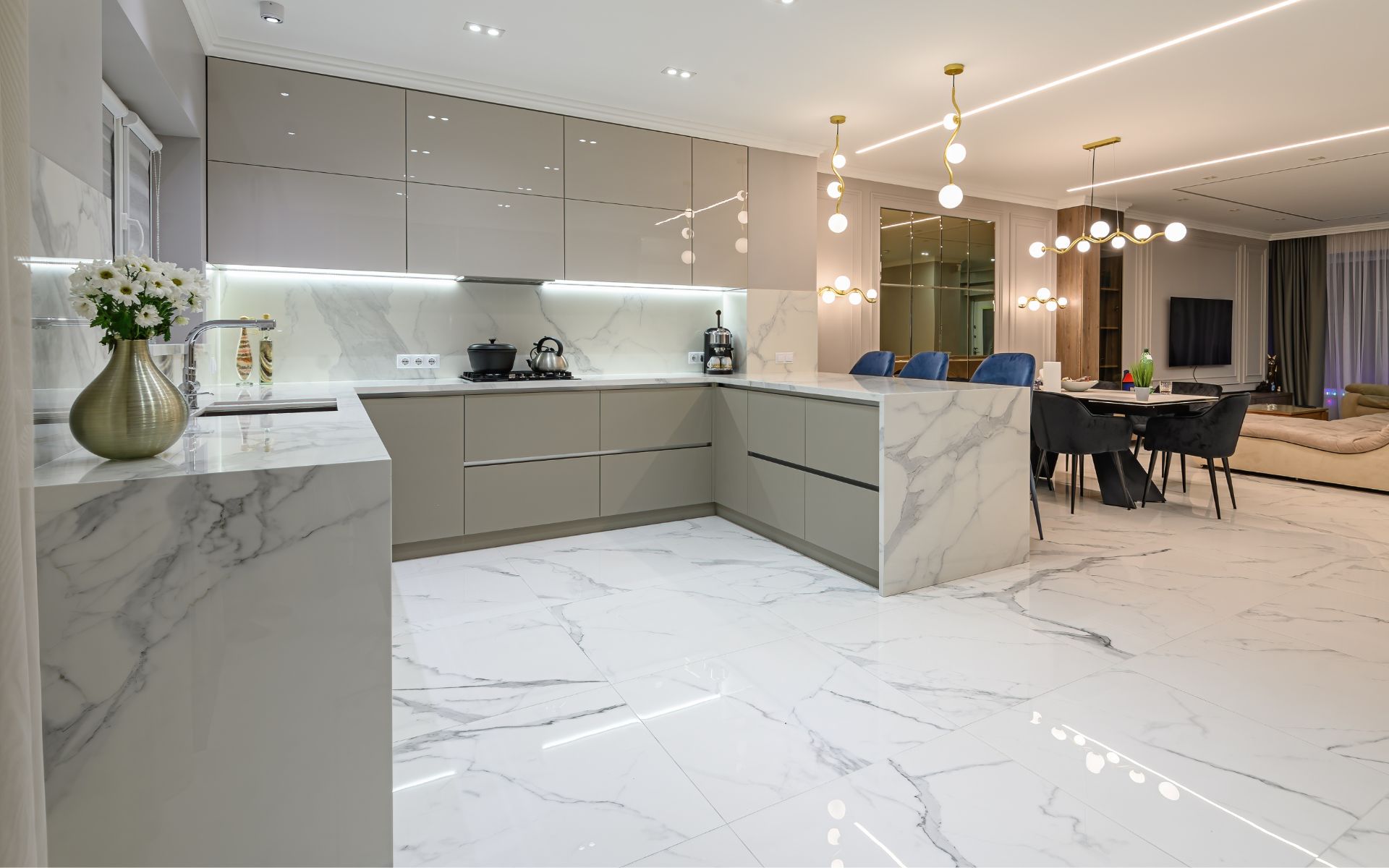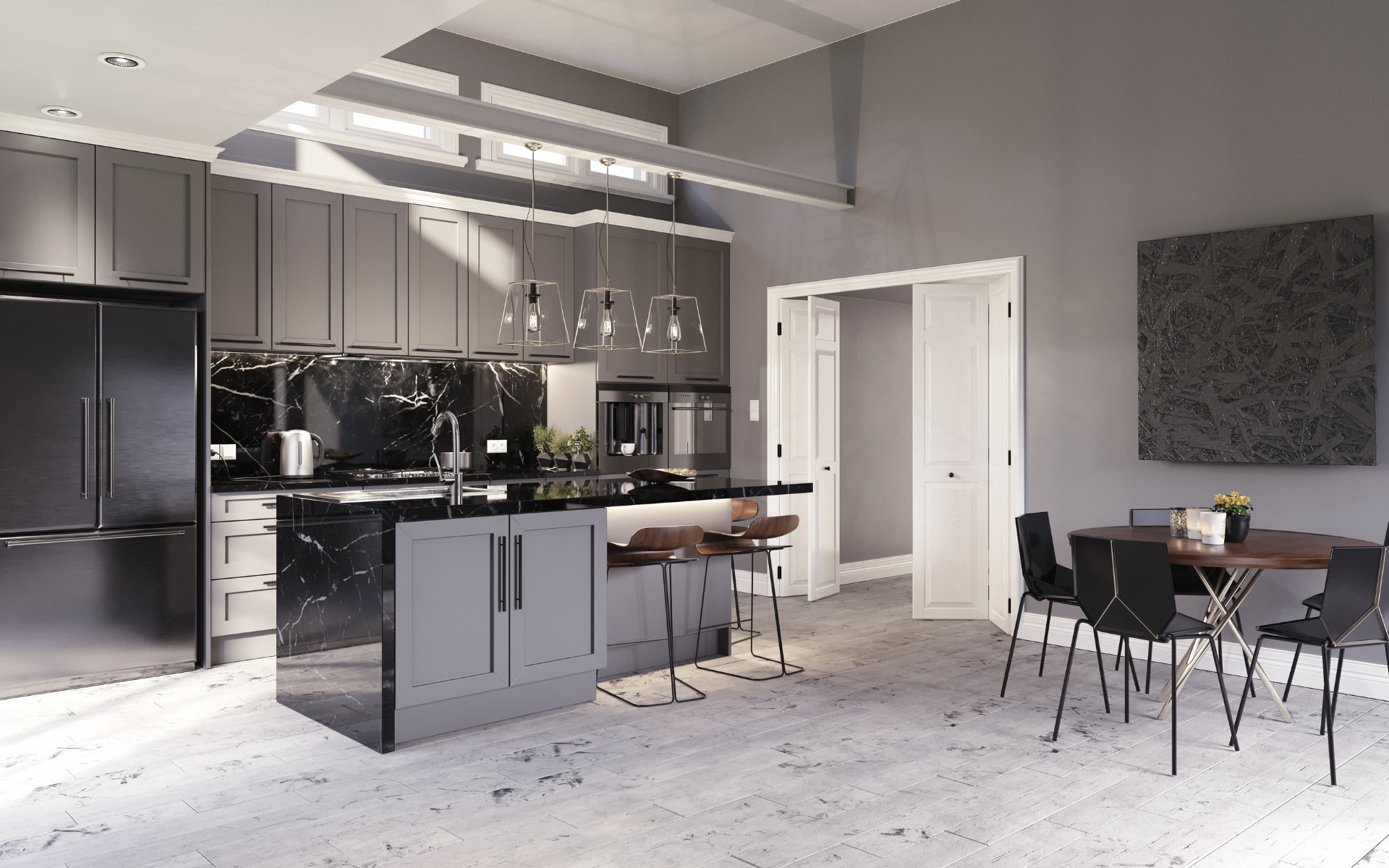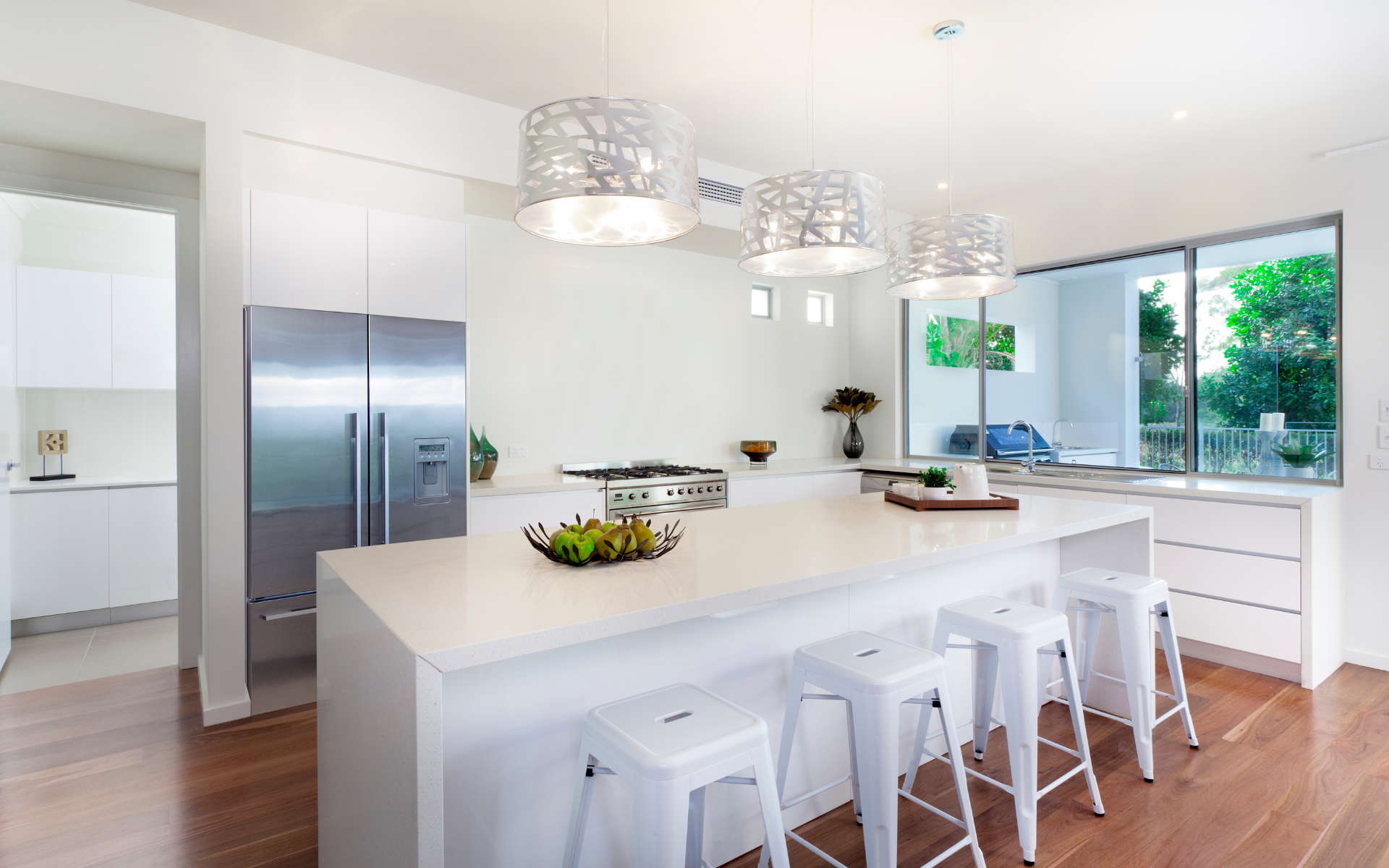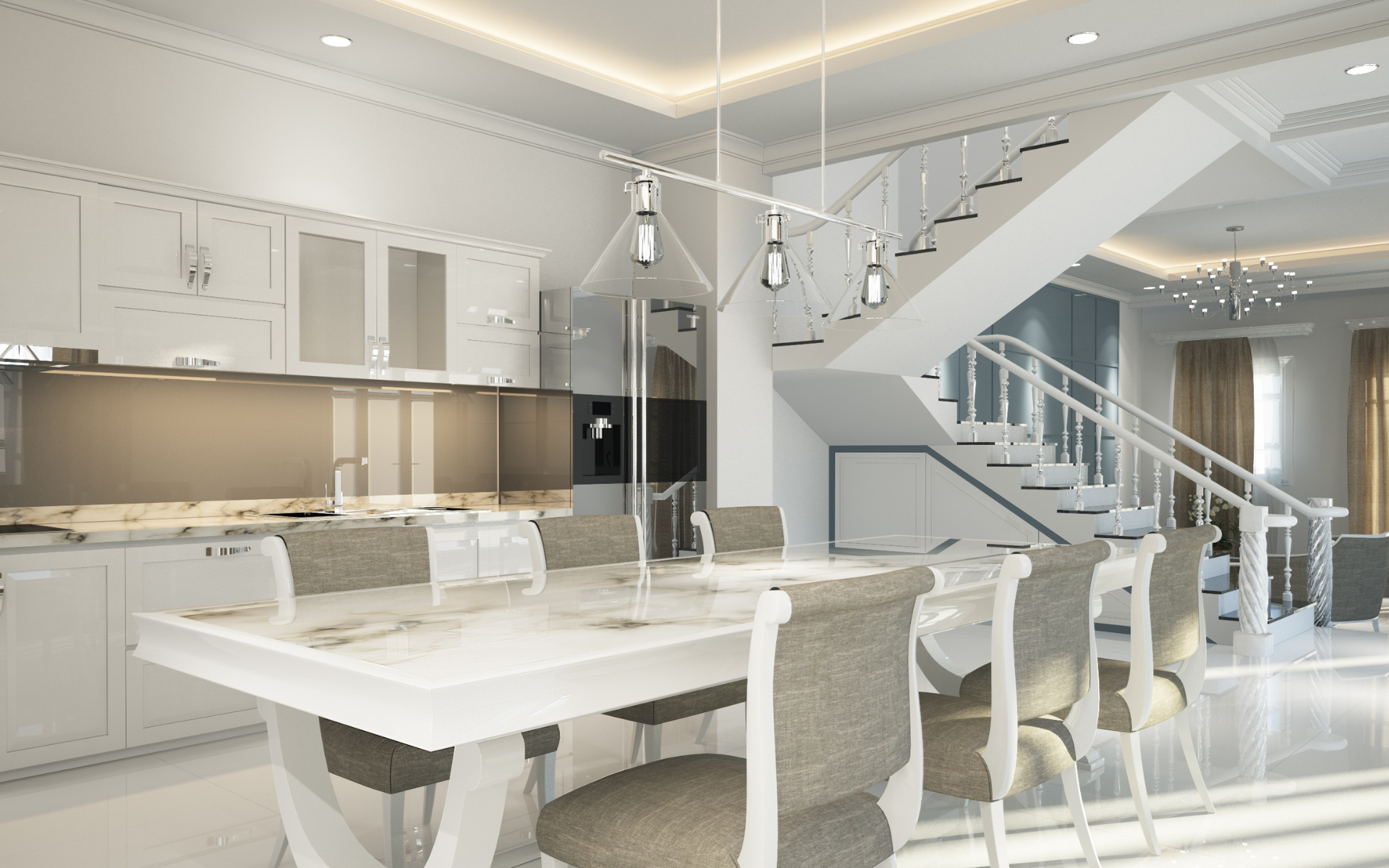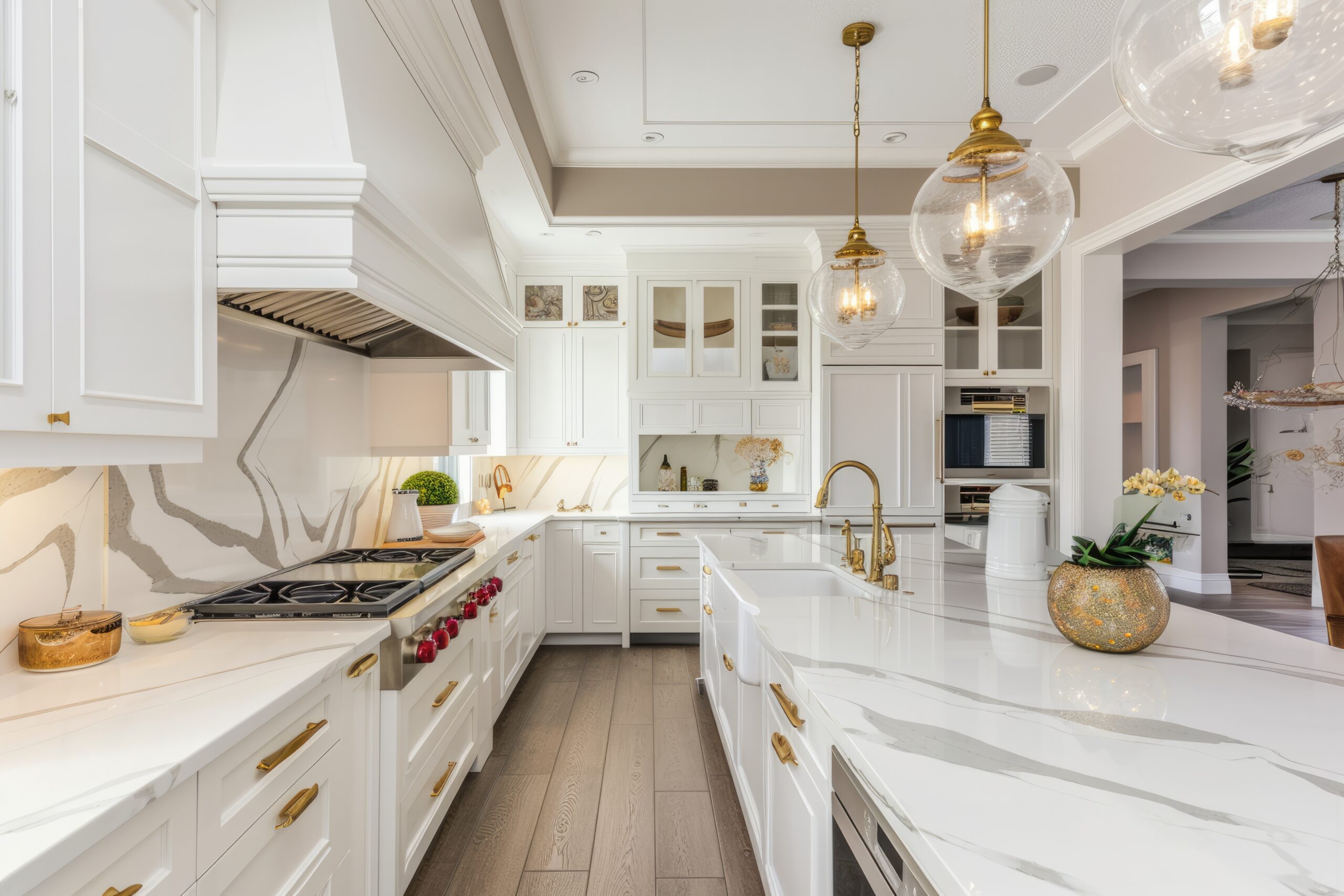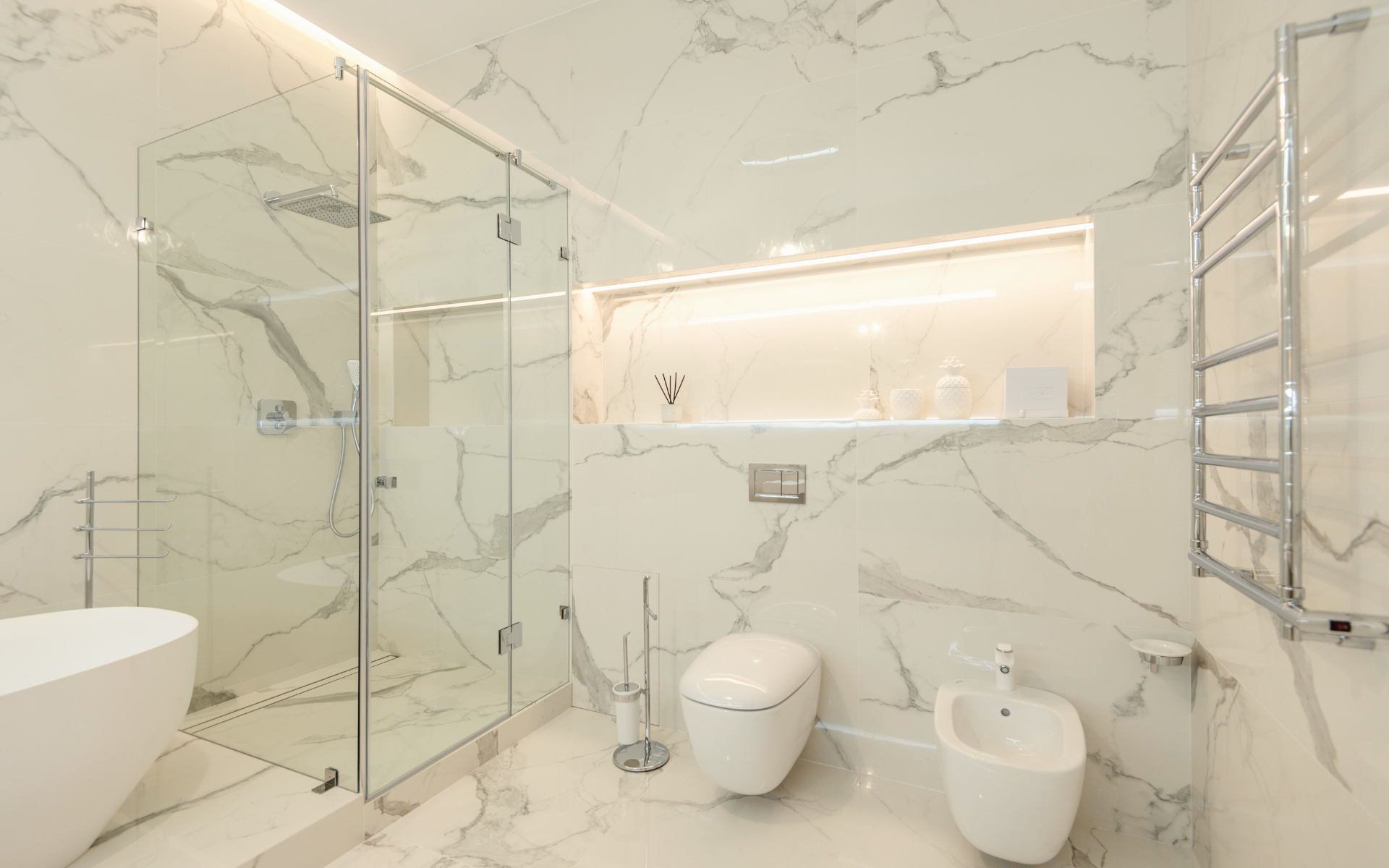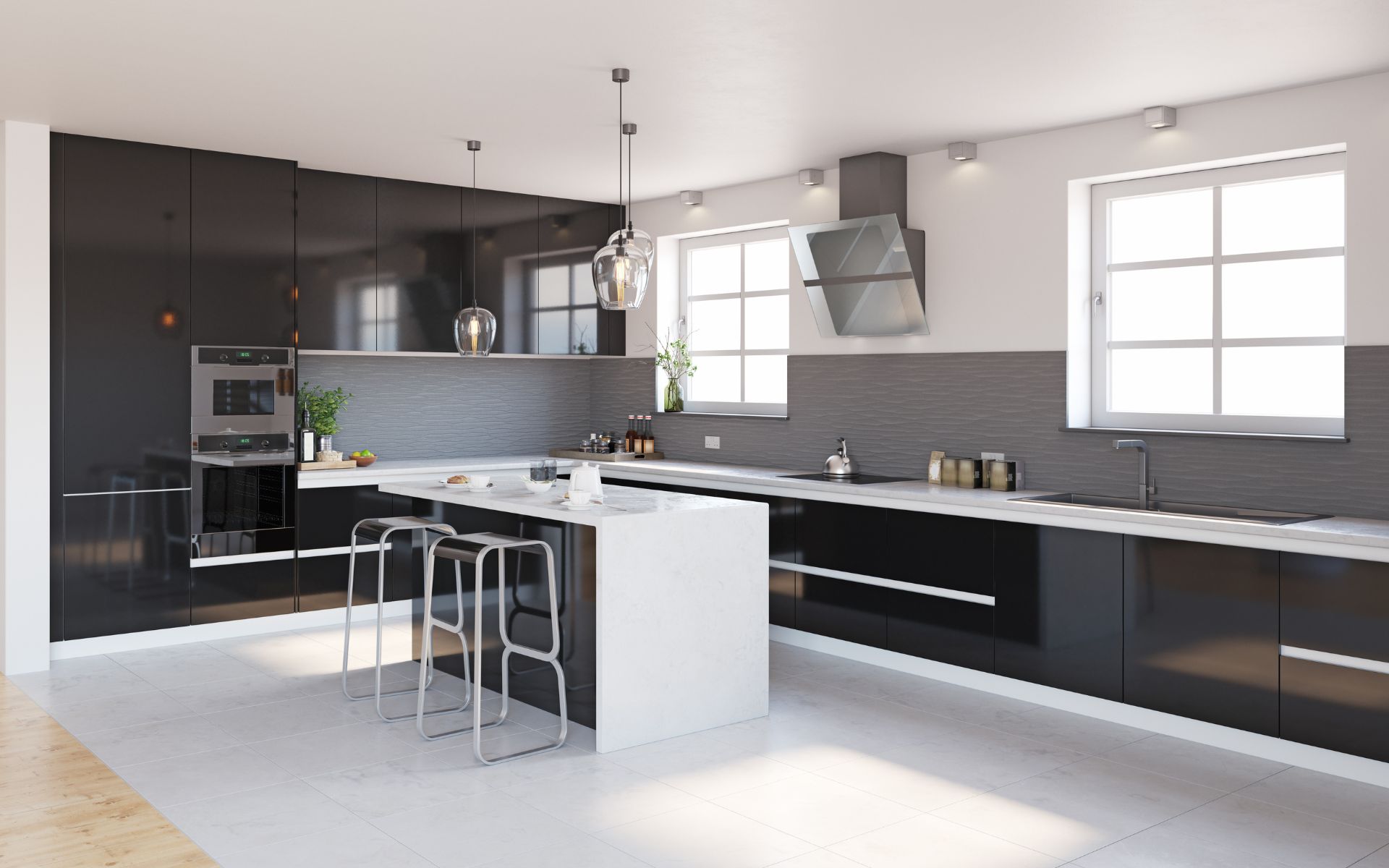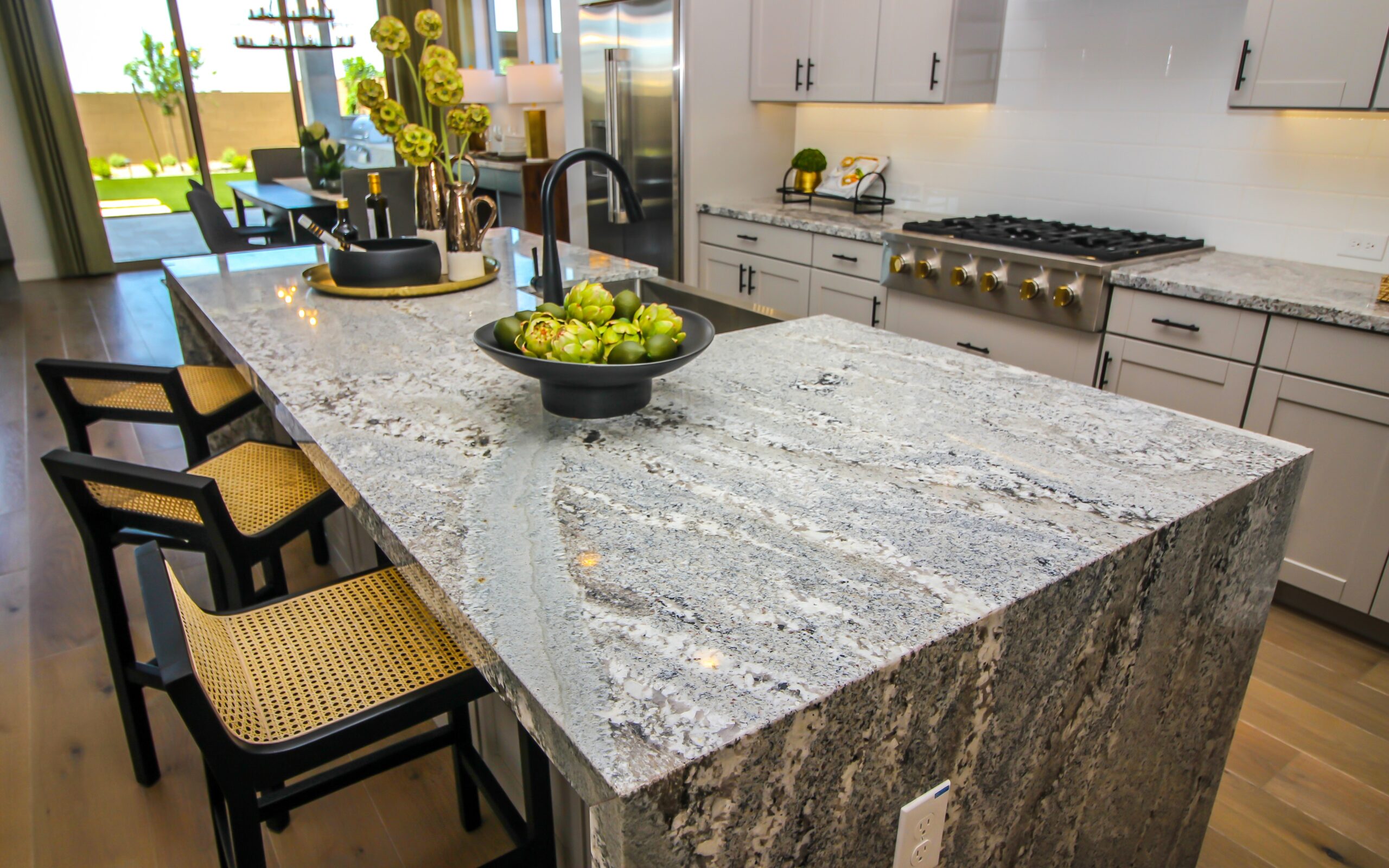Marble countertops offer timeless elegance and luxury for kitchen spaces. The classic veined stone delivers unique patterning that instantly elevates the look of any kitchen. But as a natural stone for kitchen and bath design, black marble also requires some extra care and maintenance. It also comes at a premium price point. This marble kitchen countertop guide will walk you through everything you need to know about installing marble countertops. We’ll look at cost considerations, care, and cleaning tips, design ideas, and alternatives to help you decide if marble is the right material for your kitchen.
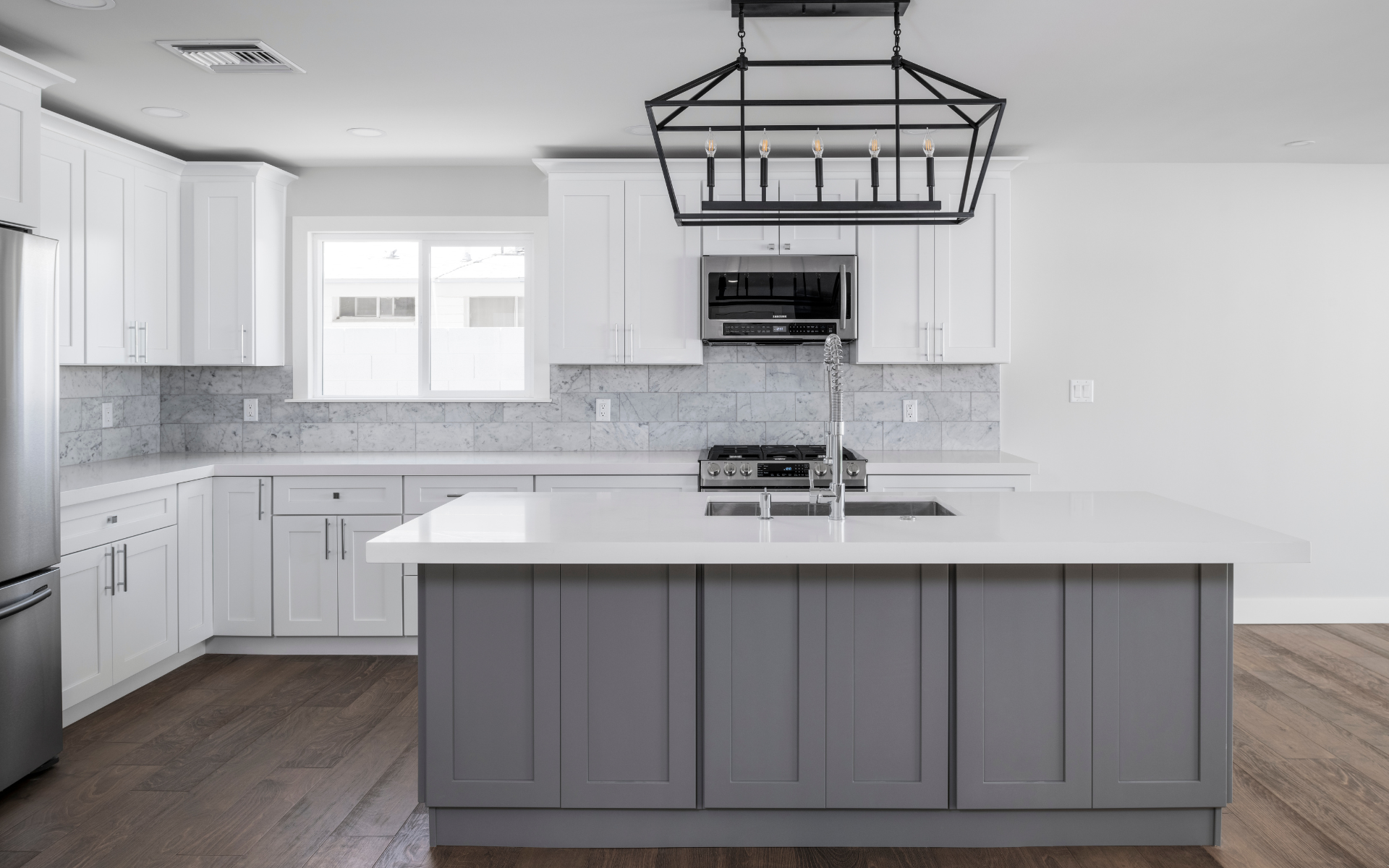
The Allure and Challenges of Marble Countertops For Kitchen and Bathrooms
Marble has been prized in sculptures and architecture for centuries thanks to its soft veining and luminosity. The same characteristics that make marble an artistic marvel also provide challenges in the kitchen and bathroom.
Why Choose Marble?
- Timeless, elegant aesthetic
- Delicate veining patterns
- Heat resistance and durability
- Luxurious high-end material
Potential Drawbacks
- Expensive (starting around $100 per square foot installed)
- Stains easily from acids, oil, and liquids
- Requires frequent sealing and maintenance
- Limited color options (mainly white/gray)
- Can scratch or etch over time
Marble’s delicate beauty comes at a cost both financially and in terms of maintenance. Proper sealing and care are essential to prevent stains and etching from other materials that can permanently damage the stone.
Marble Kitchen Countertop Colors and Veining Patterns
Marble exhibits a wide range of natural colors and veining that impacts the overall aesthetic. Consider these factors when selecting marble slabs for your kitchen counters:
White Marble
The most common marble option is white or white-gray marble such as Carrara or Calacatta. White marble provides a clean, timeless look. Veining patterns can range from fine gray streaks to dramatic gray swirls. White marble pairs beautifully with light cabinetry.
Gray Marble
Gray marble delivers an understated yet elegant look. The gray background showcases veining in white, silver, gold, and other tones. Gray marble brings an ultra-contemporary vibe perfect for modern kitchens.
Black Marble
For a bold statement, black marble has a high visual impact. The dark background makes veins in white, gray, green, and gold pop vividly. Black marble pairs well with light walls and cabinets to let the striking patterns stand out.
Colored Marble
Rarer marble varieties exhibit naturally occurring colors like green, red, pink, yellow, blue, and purple. Green marble in shades ranging from sage to emerald green can bring organic flair. Reddish marbles add a rich, dramatic effect.
Uniform vs. Dramatic Veins
Consider whether you want marble veining that provides a relatively uniform overall look or distinct, bold patterns in the stone. Dramatic large veining will make the marble counters a true standout element.
Selecting the right marble color and amount of veining comes down to personal taste and the look you wish to achieve in your kitchen design.
How to Care for Marble Countertops
While marble offers timeless elegance for kitchen remodeling, it requires regular sealing and careful maintenance to prevent stains and etching. Here are some marble countertop care tips:
- Seal marble annually – As stated by the National Kitchen and Bath Association (NKBA), marble counters should be resealed every 6 to 12 months with a penetrating sealer to prevent stains and damage. Look for specialty stone sealers at hardware stores. Sealers help prevent stains from liquids, oils, and acids from absorbing into the vulnerable marble surface. Reapplications once a year will maintain maximum protection.
- Use trivets and hot pads – Marble can easily crack or burn if exposed to extreme heat. Always place trivets, hot pads, or other protection beneath hot pots, cookware, pans, or baking dishes when setting them down on marble counters. Leave pans over 300 degrees off marble surfaces entirely to prevent fractures or discoloration in the stone.
- Clean up spills immediately – Don’t let liquids, oils, or other spills set on marble counters. Promptly blot up wet spills with a clean cloth or paper towel. For best results, use a mild dish soap and warm water to scrub the area after blotting, then rinse and dry with a clean cloth. Leaving spills for any length of time gives them a chance to permeate and stain the stone.
- Avoid acidic substances – One of the biggest threats to marble counters is acidic foods and liquids. Acids can permanently etch and eat away at the marble resulting in dull spots and permanent damage. Based on guidance from the Marble Institute of America, acidic substances like lemon juice, vinegar, and wine can etch marble surfaces. If a spill occurs, clean and rinse immediately.
- Use gentle marble cleaners – Clean marble counters with care using a pH-neutral cleaner made specifically for natural stone. Look for products that say “safe for marble” from reputable brands. Avoid abrasive cleansers or products with acids, bleach, or ammonia as these can also damage and pit marble surfaces. A mix of mild dish soap and warm water also works well for everyday marble counter cleaning.
- Re-hone and polish periodically – Even with careful maintenance, marble counters will slowly lose their luster over time with regular use. Every few years, consider having your marble counters professionally honed and polished again. This will restore the smooth finish and sheen to keep your marble counters looking like new.
With routine sealing and careful use, your marble countertops can maintain their elegance and fully showcase the stone’s natural patterning.
Integrating Marble Countertops into Your Kitchen Design
Marble makes a sophisticated focal point in any kitchen. Here are some tips for integrating marble into your design aesthetic:
Select a marble slab with statement veins – Look for a perfect slab with distinctive veining in the marble rather than a uniform look. This will become a true feature in your kitchen.
Use marble on the main cooking surface – Reserve black marble countertops for your primary prep and cooking zone. Accent with less expensive materials on perimeter countertops.
Pair with white cabinetry – White or light gray cabinets help accentuate the marble veining. Dark cabinets obscure the detailing.
Consider a matching marble backsplash – Carry the marble up the wall with a coordinating 4” backsplash. Or frame it with contrasting tile.
Design for durability – Opt for undermount sinks and avoid engraving for easier care. Use marble sealer routinely to maintain the finish.
Alternatives That Emulate the Look of Marble
If the kitchen remodeling cost and maintenance of real marble don’t fit your budget or lifestyle, consider these alternatives:
Engineered quartz
Many brands like Caesarstone offer marble-look quartz. Quartz is non-porous, so it resists staining and etching.
Porcelain or ceramic tile
Durable porcelain tile comes in marble looks but requires grouted seams. Use large format tiles to minimize grout lines.
Laminates
Formica and other laminates provide a matte finish and an affordable marble look. Laminate is prone to scratches and durability issues compared to real stone.
Concrete
Stained and stamped concrete can mimic marble at a lower cost than natural material but requires heavy sealing to prevent stains.
Is Marble Worth the Investment for Your Kitchen?
The payoff comes in the form of a striking, one-of-a-kind natural stone surface that provides timeless luxury. For many homeowners, that unique beauty is well worth the maintenance required. For others, the practicalities steer them to other natural stones or toward lower maintenance materials that emulate marble’s visual appeal.
If you’re considering marble counters, be realistic about your budget and willingness to provide routine care and upkeep. When properly installed and maintained, marble offers a lifetime of enjoyment and elegance in kitchen spaces!

